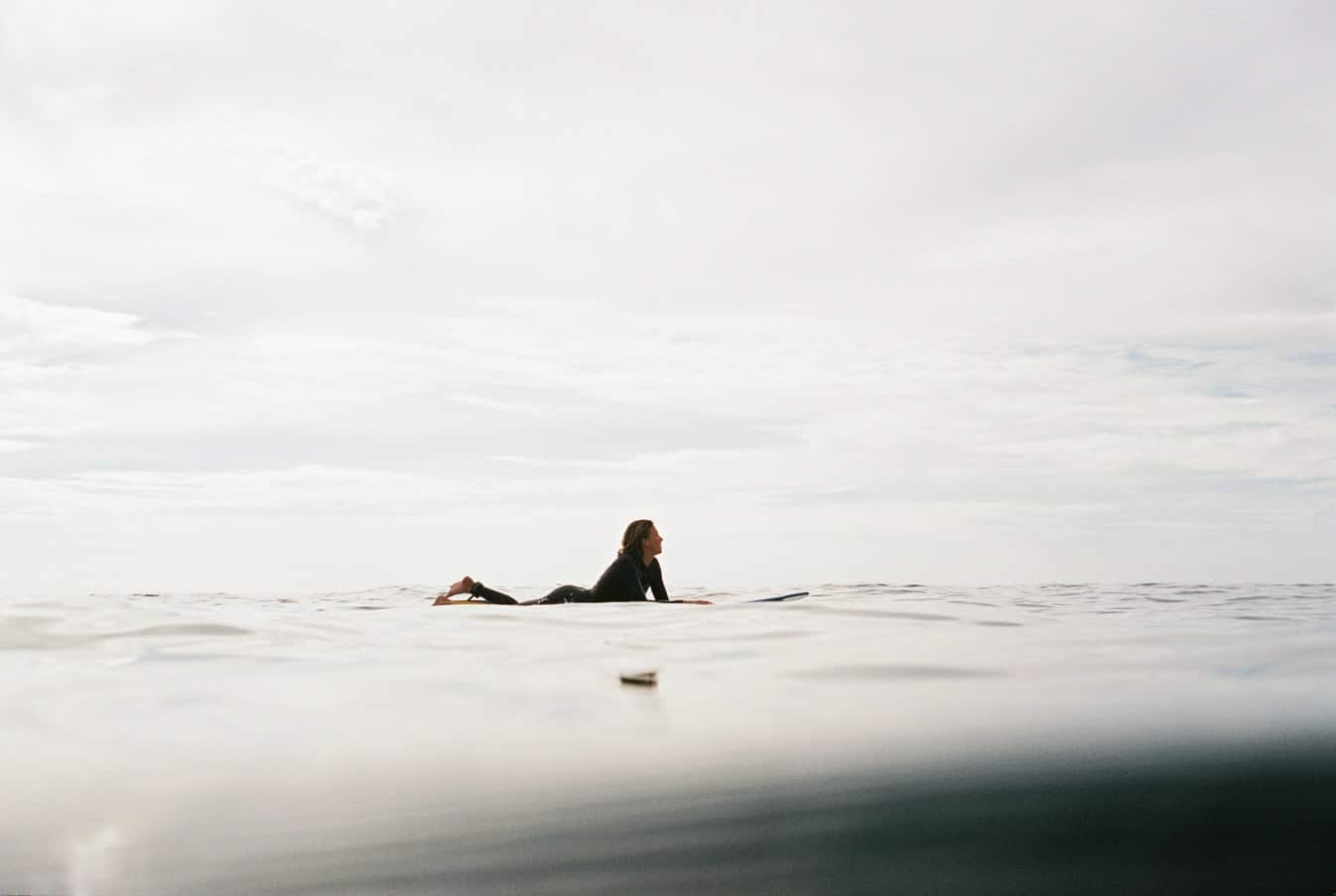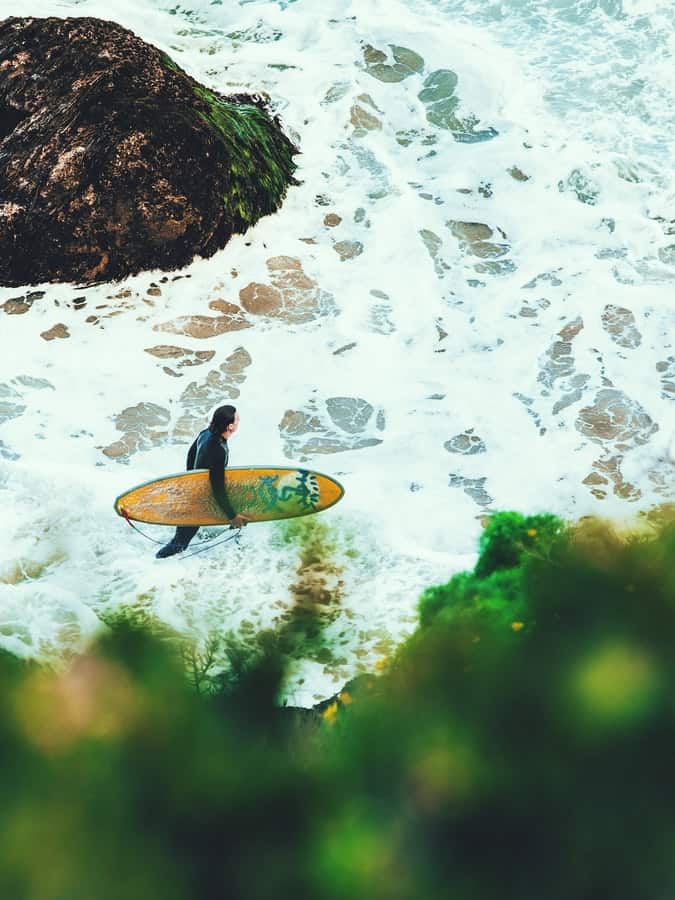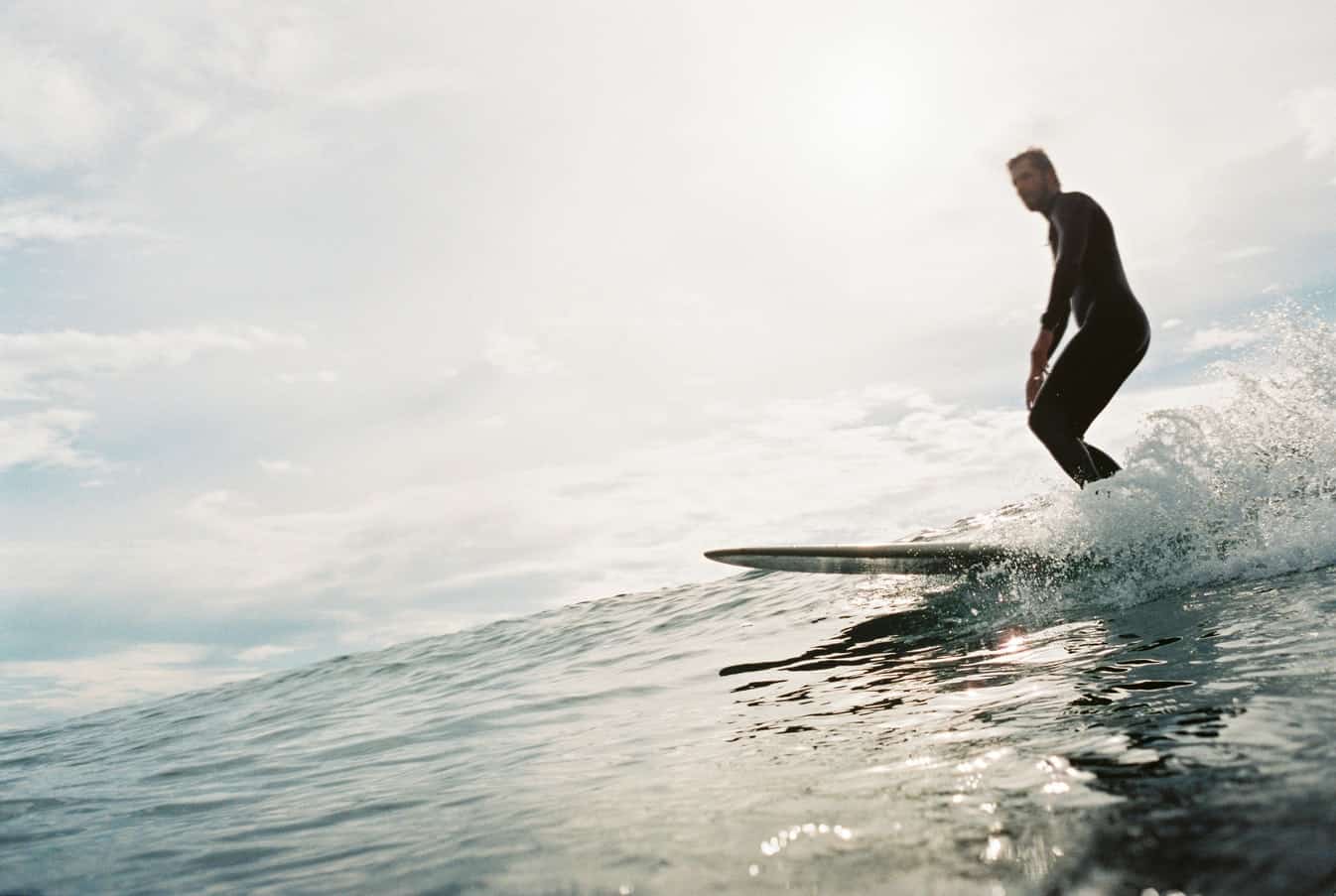So you want to learn to surf. Maybe it’s a lifelong dream, or maybe you used to live in a landlocked area and didn’t have the chance to learn. Either way, welcome.
There’s a lot to learn when it comes to surfing and most people take lessons. For some though, lessons may be inaccessible. So can you learn to surf without them? Yes, you can certainly learn to surf without lessons, but it will be harder.
You can learn to surf without lessons, but it’s advisable to at least take one to learn the basics.
Paddling and popping up, as well as surf etiquette are some of the most important aspects of surfing. After all, you can’t stand up on your board without knowing some technique.
By taking a lesson, you’re ensuring that you’ve learned proper technique which will go a long way on your surfing journey.
If lessons just aren’t your thing or are unaffordable, try enlisting a more advanced surfer to give you a rundown. They’ll be able to help you learn the most important aspects of surfing, and honestly could be more fun than a lesson with a bunch of other beginners.
However, if neither option is accessible, you can teach yourself to surf, but it will be a much more challenging process. You need to have the right equipment and some general safety knowledge as well as the key points of paddling and popping up.
Essential Equipment
First things first, in order to surf, you need certain equipment.
Surfboard
Obviously you can’t go out surfing without a board. However, you want to make sure you’ve picked out the right board for a beginner. Go for a foamie, or soft top longboard.
While shortboards may look cool, they aren’t meant for learning to surf. You can upgrade as your skills improve.
Longboards are great for beginners. They have greater volume, or buoyancy, which helps keep you floating while the extra length and width helps with stability. In the beginning stages, getting up in general is an achievement, so the extra help is worth it.
Choose a soft top over an epoxy for your first board. Foam boards require less maintenance and are much more durable than other boards.
As you’re learning, you’ll be falling a lot, falling and losing your board. Having a board made of foam means that when it comes back to smack you in the face, it won’t hurt as bad as an epoxy board.

On that note, it’ll be safer for other surfers in the case your board gets away from you. On top of generally being softer, these boards won’t incur the dents and gashes of other boards. Again, you’ll be falling a lot as you learn and you’ll want a board that can handle getting beat up.
Board repairs can get expensive and you don’t want to worry about water seeping into cracks and holes in your board. You’ll have enough on your plate just learning to surf.
Wetsuit
If you’re learning to surf outside of the tropics, you may need a wetsuit. Basically, if the water is going to be too cold for you to stay in for a long time or will make you stiff, invest in a wetsuit.
You can find them at every surf shop where the employees will be able to explain and help you choose the right one for your waters.
In general though, when choosing a wetsuit, look for a snug fit without pulling or bunching. Like Cinderella’s glass slipper, your wetsuit should fit just right.
If it’s too tight, you can limit your mobility and stretch out the fabric, running the risk of tears and defeating the wetsuit’s purpose.
On the other side, a too loose wetsuit will allow water in, again, defeating the whole reason for wearing one in the first place. Bunching or gaps in the fit mean it’s too loose.
After fit, the most important aspect of a wetsuit is thickness. The thickness dictates how much warmth the wetsuit will provide.
This is listed by millimeters and the greater the number, the thicker the suit and therefore, the warmer it will be.
Your surf shop will be able to tell you the right thickness necessary for your location.
Other Clothing
If you don’t need a wetsuit, there’s still some other clothing to consider. Swimsuits are a given, but make sure your swimsuit will stay on and provide enough mobility for the activity.
Long board shorts may constrict your leg movement causing unnecessary struggles in popping up. Bikinis may move around and slip off with aggressive movement or in falling from your board.
Do a movement check in your preferred swim clothes and make sure they’ll be comfortable for surfing.
In addition to the right swimsuit, you may want to get a rash guard. As the name implies, a rash guard prevents a rash from forming on your belly or chest.
Since you’ll be face down on your board for a long period of time, irritation can start to occur. Wearing a rash guard will keep you more comfortable so you can stay out longer.
SPF
Sunscreen is the last essential needed when surfing. The sun’s rays are intensified on the water thanks to the reflection, and you’ll quickly end up burned without it.
Look for physical sunblocks like titanium dioxide and zinc, they’re less harmful and work better than chemical sunscreens.
Choose something with an SPF above 30. Apply at least fifteen minutes before going in the water and reapply often.
Going home after a challenging session with a painful sunburn can be a real bummer you want to avoid at all costs.
Technique
Now that you have the right gear, you need the right moves in order to get out in the waves.
Paddling
Paddling could be considered one of the most important aspects of learning how to surf. You’ll be spending a lot of time paddling, especially as you learn, and it’s important to know you’re doing it right.
Bad paddling technique will slow you down and exhaust you before ever catching any waves.
First things first is your balance on the board. You want to make sure you aren’t too far forward, back or too far on either side.
When you aren’t well placed on your board, it creates drag or resistance, meaning you’re paddling harder than necessary.
Test out your balance in the shallow waters before paddling out. The nose of your board should be one to two inches above the water when your head is raised. At the same time, be sure your tail isn’t ducking under the water.

Next, be sure your body is centered on the board, not too far right or left. Raise your arms and notice if you lean to a particular side. It may take a few minutes to find the sweet spot on your board.
Once you have yourself positioned well, it’s time to actually paddle. Keep your arms slightly bent and close to the body, like in a breaststroke.
Scoop your hands through the water like a cup, fully extending your arms into the ocean, versus slapping the water with open hands or brushing through the surface, for the greatest propulsion forward.
You should be making big circles with your arms close to your ears. Extending your arms out to the sides, or not scooping deep enough will hold you back and waste precious energy.
Practice the motions on the sand before heading into the water. If you can, ask another surfer to critique you.
Popping Up
Popping up is the process of going from face down to standing on your board when catching a wave.
It’s more than just jumping up as you have to make sure your board is balanced and that you will be balanced once you get up.
The first aspect is paddling to catch a wave. You’ve turned around, you’ve paddled hard and you feel your board picked up by the force of the wave.
Plant your hands under your chest or rib cage. Don’t grab onto the rails as this will throw your board off balance.
With your hands firmly in place, arch your back lifting yourself up into an upward facing dog, or pushup like position. Only the feet and hands should be touching your board at this point.
Keep your head looking up and forward, not down at your board.
From here, bring your back foot into position. Slide it underneath you, keeping the knee bent. When the back foot is in position, bring your front foot forward closer to your hands.
Stay low with your knees bent to help with stability and balance. Last, is to lift your hands from the board. You can have your hands extended in front and behind you for better balance, or both in front, but don’t stick them out to the sides.
Again, keep your knees bent for a low center of gravity. Straight legs will cause you to fall quickly.
In practice, this should be a fluid process that happens quickly. Work on popping up on the shore until you have the motions down solid.
It will make doing so in the water much easier. Find someone to help you or give you tips.
General Tips
In addition to having the right gear and techniques, there are some general safety and instructional tips to surfing.
Know How to Swim
First and foremost is to know how to swim. It may sound obvious, but if you aren’t a strong swimmer, you probably shouldn’t be surfing, especially on your own.
If you struggle with swimming, practice that skill before trying out surfing, or take lessons for a safer environment.
Stay In the Shallows
Stick to the shallows in the beginning. Learning to surf is easier on small whitewater waves closer to the shore.
The advanced surfers that are out past the breaking waves may look cool, but those waves aren’t suitable for someone just starting out.
Whitewater waves will allow you to focus on the techniques of learning to stand, and get you used to the water and falling. Once you’ve mastered catching waves and standing, you may want to venture further out.
Choose the Right Beach
Go to and research the best beaches for learning to surf. You want to make sure there aren’t reefs or rocks that may cause injury, as well as making sure there is a lifeguard on duty.
Look for a beach that isn’t too crowded and has other beginner surfers.
Watch Out For the Locals
This means both surfers that are more advanced than you, and other beachgoers. There’s a lot on your mind when learning to surf, but awareness of others around you is still vital.
Don’t get too close to other surfers or swimmers in case you lose your board, as this can cause injury to others.
Pay attention when going for a wave that someone else isn’t already going for it. It’s highly rude in the surf community to drop in on someone else’s wave. Wait your turn and learn the rules.
Related Questions
What is the Best Time of Day to Go Surfing?
Generally, the best times to go surfing are in the early morning and in the evening. These times of day usually have less wind, meaning better surfing conditions.
If you’re just learning to surf and are still in the whitewater waves, time of day is less important.
What is a Surf Break?
A surf break is a location for surfing where the waves are breaking. There are four different types of surf breaks, point breaks, reef breaks, beach breaks and river breaks.
Beach breaks are considered the best for learning how to surf as the sandy bottoms run less risk for injury.

